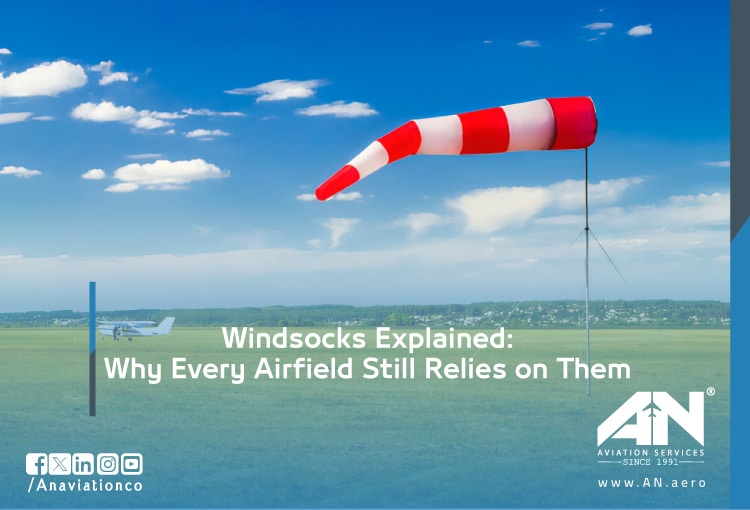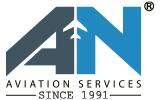
Despite all the advancements in modern aviation, some tools continue to stand the test of time. Windsocks remain a critical visual aid for pilots at every type of airfield. Whether it is a small rural strip or a large international airport, windsocks provide clear, instant information that helps ensure safe flight operations.
Electronic systems may offer detailed wind data, but pilots still rely on the simplicity and reliability of the windsock. It serves as a visible, fail-safe indicator that operates without the need for power or complex technology.
This article explains why windsocks continue to be indispensable and how they are adapted to suit the unique demands of various airfields.
The Importance of Visual Wind Indicators
One of the greatest advantages of windsocks is their independence from electrical power. In situations where automated systems fail, windsocks continue to function without interruption. They instantly show wind direction and approximate strength using nothing more than the wind itself. This quality makes them a highly dependable resource for pilots during all phases of flight.
Windsocks offer a form of communication that is universally understood by pilots, regardless of their experience level or location. Whether flying a light aircraft or a commercial jetliner, pilots can easily interpret a windsock. This simplicity eliminates any risk of miscommunication and provides consistent wind information across all types of airfields.
Windsocks at Small Grass Strips and Rural Airfields
Basic but Critical Design: At small airstrips, the role of windsocks is straightforward yet essential. These airfields often operate without sophisticated infrastructure, making the windsock the primary source of wind information.
The design is typically minimal: a brightly colored fabric sleeve mounted on a pole, providing direct and immediate feedback on wind direction and speed.
Lightweight, Portable Options: Many rural airfields benefit from windsocks that are easy to install and remove. Portable windsock models allow for quick setup in locations where permanent structures are impractical. Some pilots even carry compact windsocks to deploy before landing, enhancing safety in temporary or remote landing zones.
Manual Installation and Low Maintenance
Small airfields do not require complicated equipment to install windsocks. A simple pole fixed securely into the ground is sufficient. Maintenance needs are minimal, with occasional replacement of the fabric being the most common task due to exposure to weather elements.
Challenges in Remote Locations:
Airfields in isolated regions often face harsh weather, including strong winds, intense sunlight, and heavy rainfall. Windsocks in these locations must be manufactured using high-quality materials to prevent rapid wear and tear, ensuring long-term functionality.
Weather Resistance for Harsh Conditions:
Manufacturers address these challenges by using durable, UV-resistant fabrics combined with corrosion-resistant metal supports. These features allow the windsocks to remain effective and clearly visible even after prolonged exposure to demanding weather conditions.
Visibility for VFR Pilots:
For pilots operating under Visual Flight Rules (VFR), a clearly visible windsock is crucial. Bright colors, typically orange or white, help maintain high visibility in varied lighting and weather conditions, supporting safe takeoff and landing decisions.
Regional Airports: Balancing Tradition and Technology
Regional airports combine traditional safety tools with modern technology to support safe flight operations. While advanced weather systems provide detailed data, windsocks remain a trusted visual guide for pilots. Their standardized design ensures clear, consistent wind readings, making them an essential feature at every regional airfield.
1- Standardized ICAO-Compliant Windsocks
At regional airports, aviation authorities enforce strict standards for windsocks. The International Civil Aviation Organization (ICAO) outlines specific regulations to ensure that windsocks meet international size, shape, and performance criteria, providing pilots with consistent and accurate visual cues.
2- Height and Color Regulations (Orange/White)
Regulations specify both the height at which windsocks must be mounted and the color patterns used. Orange and white stripes are common, improving visibility against different backgrounds such as grass, pavement, or sky. The correct height ensures that the windsock accurately reflects wind conditions at the aircraft’s operational altitude.
3- Dual Windsocks for Crosswind Indication
Airfields experiencing frequent crosswinds often use multiple windsocks positioned at strategic points along the runway. This arrangement provides pilots with a more complete view of wind direction changes, helping them adjust their approach and landing techniques accordingly.
4- Integration with Digital Systems
While automated systems such as the Automated Weather Observing System (AWOS) supply detailed meteorological data, windsocks offer pilots a rapid, visual confirmation of these readings. This combination enhances situational awareness and flight safety.
5- Backup for AWOS/ASOS Failures
In the event of electronic system failures, windsocks act as a reliable backup. They continue to operate without external power, ensuring that pilots have access to crucial wind information under all circumstances.
Major International Airports: High-Tech Meets Reliability
At major international airports, windsocks work alongside advanced technology to provide pilots with quick, reliable wind information. With multiple placements, lighting for night use, and support for modern wind sensors, windsocks continue to play a key role in maintaining safe operations across complex runway systems.
1. Redundant Windsock Placements
Large airports with complex runway systems use multiple windsocks to provide comprehensive wind information. These windsocks are strategically placed near runways, taxiways, and key operational points to ensure that pilots have constant visual reference throughout their flight operations.
2. Multiple Locations for Runway Complexes
With large airfields often spanning several kilometers, a single windsock is insufficient. Multiple units are positioned across various sections of the runway complex to account for wind variations in different areas of the airport.
3. Illuminated Windsocks for Night Operations
At major international airports, flight operations continue around the clock. To support night landings and take-offs, windsocks are equipped with lighting systems that maintain visibility during hours of darkness or low visibility conditions.
4. Supporting Advanced Wind Sensors
These airports utilize advanced technology such as Doppler radar and LIDAR systems. Despite these sophisticated tools, windsocks remain in place to provide pilots with a simple and immediate verification method during critical flight phases.
5. Cross-Verification with LIDAR/Doppler
Pilots often cross-check digital wind readings with the visible movement of the windsock. This practice helps identify any discrepancies in electronic readings and ensures an extra layer of safety during landings and take-offs.
Helipads and Vertiports: Specialized Windsock Needs
Helipads and vertiports require compact, specialized windsocks that offer clear wind direction without obstructing limited space. These windsocks help helicopter and drone pilots operate safely in urban environments, rooftop locations, and future eVTOL hubs.
- Low-Profile for Urban Environments: In urban settings, helipads require windsocks that are compact and low-profile to avoid obstructing views or conflicting with nearby structures, while still providing clear wind direction information.
- Wind Shear Alert Enhancements: Some helipads install supplementary indicators alongside windsocks to alert pilots to the risk of wind shear, which can be especially dangerous in high-rise environments.
- Micro-Windsocks for UAV Operations: With the growth of drone operations, micro-windsocks are becoming common. These smaller windsocks assist drone operators in monitoring local wind conditions, improving safety during take-off and landing phases.
- Future eVTOL Requirements: As electric vertical take-off and landing (eVTOL) aircraft are introduced, vertiports will require specialized windsock setups. These indicators will play a key role in ensuring safe operations for this emerging category of aircraft.
Military and Emergency Airfields: Rugged Adaptations
Military and emergency airfields use tough, quick-to-set-up windsocks that handle extreme conditions, helping pilots stay safe during missions, disaster response, and harsh weather operations.
- Rapid-Deployment Windsocks: Military and emergency airfields utilize windsocks designed for quick deployment. These units can be transported and installed rapidly in temporary or rapidly changing environments.
- Battlefield and Disaster Response Use: During combat missions or disaster relief efforts, windsocks provide vital wind information to helicopters and fixed-wing aircraft operating in unpredictable conditions.
- Camouflage vs. High-Visibility Options: Military operations sometimes require windsocks that blend with the environment for tactical reasons. In contrast, emergency response situations prioritize high-visibility designs to maximize safety.
- Arctic and Antarctic Station Modifications: Operations in polar regions require windsocks constructed from special cold-resistant materials that do not freeze or stiffen in extreme cold.
- Cold-Weather Durability: These windsocks feature durable, flexible fabrics designed to withstand sub-zero temperatures, strong winds, and heavy snow accumulation.
- Snow and Ice Resistance Features: Certain models incorporate heated supports or specially treated fabrics that resist ice buildup, maintaining visibility and functionality even during severe winter conditions.
Windsocks Are Non-Negotiable for Safety
Regardless of the technological advancements in aviation, windsocks remain a non-negotiable safety feature at every airfield. From small grass strips to the busiest international hubs, the presence of a correctly positioned and well-maintained windsock plays a crucial role in flight safety.
Choosing the appropriate type of windsock for each airfield ensures pilots receive the most accurate and immediate wind information possible. This simple, time-tested tool continues to serve aviation safely and reliably in every corner of the world.

